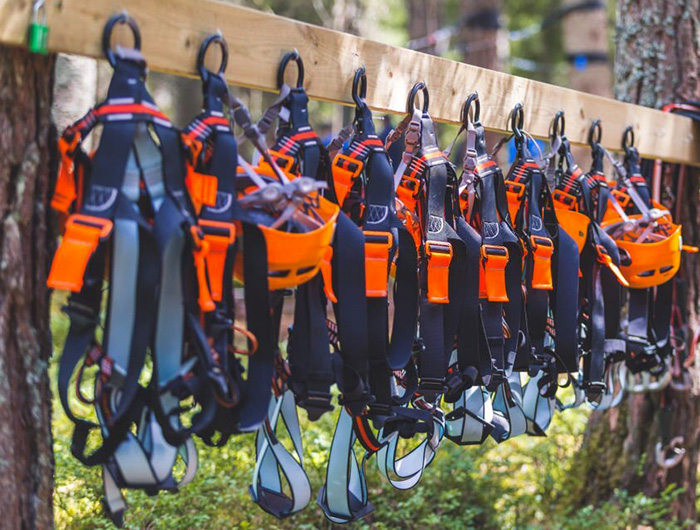As a mountain climber, I know how important it is to take care of your equipment. Your climbing harness is an essential piece of gear that must be adequately maintained to remain safe and effective.
Washing your climbing harness is a crucial part of its maintenance, as it helps to remove dirt, sweat, and other debris that can weaken the other’s materials over time. But how to wash a climbing harness properly? This article will guide you through the steps to wash your climbing harness properly.
Important Reminders:
Can you wash a climbing harness? Yes, you can as part of its maintenance. Before you begin washing your climbing harness, it is essential to read the manufacturer’s care instructions. Different brands and materials may have specific instructions for washing and drying the harness.
It is important to follow these instructions to avoid damaging the harness or reducing its lifespan. Before proceeding with the wash, check the harness for any visible signs of wear or damage, such as fraying or tears.
You can also check the label to see if there are any specific cleaning instructions. Different harnesses may require different cleaning methods, and you don’t want to risk damaging your harness by using the wrong cleaning method.
Contents
What You’ll Prepare
- A large bowl or bucket
- Mild detergent or soap
- Soft-bristled brush
- Clean Water
- A hanger or drying rack
Fill the bowl or bucket with warm water and add a small amount of mild detergent or soap. You don’t want to use anything too harsh that could damage the harness’s materials. Mix the solution well.
Step 1: Preparing the Harness
To prepare the harness for washing, remove any gear or accessories that may be attached to it. This includes carabiners, chalk bags, and anything else that may be clipped into the harness. It is also an excellent idea to untie any knots in the harness to ensure that it gets thoroughly cleaned.
Removing any gear or accessories attached to the harness will prevent them from getting damaged or tangled during washing. In addition, untying any knots in the harness will ensure that it gets thoroughly cleaned and prevent any dirt or grime from getting trapped in the knots.
When you are taking time to prepare the harness for washing properly will make the cleaning process more effective and will help extend the lifespan of the harness. If your harness has removable padding or foam inserts, be sure to remove them before washing them as well.
Step 2: Cleaning the Harness
Once you have the materials and have prepared the harness for washing, the next step is cleaning the harness. First, submerge the harness in the water and let it soak for a few minutes. Use the soft-bristled brush to gently scrub the harness, spying special attention to any areas with extra dirt or debris.
Be careful not to scrub too hard, as this could cause damage to the harness. After thoroughly cleaning the harness, rinse it well with clean water. Make sure to remove all the soap or detergent residue to prevent any damage or irritation to your skin.
Step 3: Drying the Harness
After you have rinsed the harness, gently squeeze out any excess water. Do not wring or twist the harness, as this could cause damage to the materials. Instead, gently pat the harness with a towel to remove any remaining moisture.
Next, hang the harness to dry in a well-ventilated area. Do not use a dryer or any other heat source to dry the harness; this could cause the materials to shrink or become brittle. Allow the harness to dry completely before storing it away.
Step 4: Inspecting the Harness
After the harness has dried completely, inspect it for any signs of damage or wear. Look for frayed or worn areas, tears, or any other signs of damage that could compromise the harness’s safety. If you notice any issues, replacing the harness rather than continuing to use it is best.
It is also essential to check the stitching and buckles for any loose threads or signs of wear. Check the buckles to make sure they are functioning properly and are not stuck or difficult to open and close. If you notice any issues, having a professional inspect the harness or replace it before using it again is best.
Conclusion
Learning how to wash a climbing harness is integral to its maintenance. By following these simple steps, you can ensure your harness stays clean and safe for your next climb. Remember to read the manufacturer’s care instructions and the other steps in this article. With proper care, your climbing harness will last many years of exciting and safe climbing adventures.





